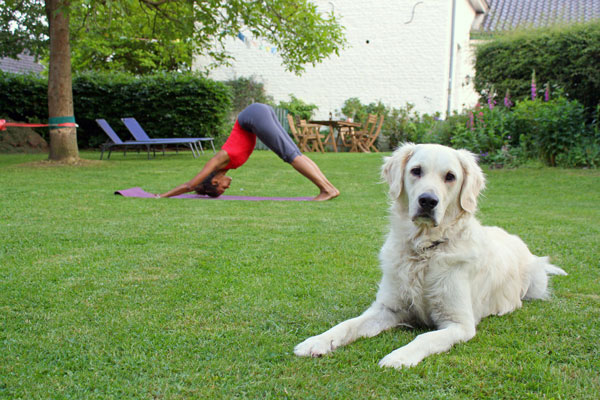Off-leash dog areas, or dog parks, provide a community setting in which people can gather and socialize[1] and where they can observe the interaction of groups of dogs at play. Dog parks allow owners and their dogs to spend time together and offer dogs a space for play and companionship with others.[2] Leashes can cause dogs to become territorial.[3] Roaming free is beneficial for dogs.
Organizations like the ASPCA view that dog parks are beneficial to dogs and dog owners.[4] According to Dan Emerson of DogChannel.com, proponents of dog parks cite the following benefits: “They promote responsible pet ownership and the enforcement of dog-control laws; give dogs a place to exercise safely, thus reducing barking and other problem behaviors; provide seniors and disabled owners with an accessible place to exercise their companions; and provide an area for community-building socializing.”[5] Dog park regulations vary from park to park, but some are quite extensive and comprehensive.[6]
In the United States, Great Britain, and Australia, the number of dog owners has grown by several millions from the 1990s to the 2000s, and the number of dogs per household has also increased.[7][8][9][10] In her 2007 Master’s Thesis, Dog Parks: Benefits and Liabilities, author Laurel Allen wrote:
“In urban environments dogs are generally confined to a crate, portions of the home, or small sections of the yard most of the time. Typically, dogs are taken on daily walks, but because of strict leash laws, they cannot run free or easily socialize with other dogs.”
Studies have shown that people find it easier to talk to each other with dogs as the initial focus, breaking down the usual social barriers that make people perceive others as strangers.[11][12] many of whom are unable to properly exercise their dogs and who could benefit from taking their dogs to a dog park.[13]
Additional benefits of a dog park to the community include promoting responsible dog ownership[14] as well as accommodating dogs and their owners in a public open space, which has been shown to lead dog owners to higher levels of compliance with relevant laws.[15]
- The benefits of exercise for dogs are well documented,[16] although dogs can learn and reinforce bad behaviors if owners are not vigilant or careful.[17] Cesar Millan, the Dog Whisperer, cautions that the dog park should not be used as a substitute for a daily walk. He suggests that the owners walk their dogs briskly for 35 minutes to calm them before placing them unleashed inside a dog park enclosure.[18] Dogs that are highly socialized and exercised are healthier, happier, and less aggressive in behavior. They are less likely to bark or be destructive or aggressive if they are able to expend pent-up energy during regular play or exercise.[19]
Notes:
- “Dog Parks”. ASPCA. Retrieved 2013-06-10.
- “Creating a Dog Park for Your Community”. Bestfriends.org. 2004-09-06. Retrieved 2012-05-08.
- “Avoiding Onleash Dog Aggression”. Canineuniversity.com. Retrieved 2012-05-08.
- “ASPCA Position About Dog Parks”. Aspca.org. Retrieved 2012-05-08.
- “How to Start a Dog Park” (PDF). Retrieved 2012-05-08.
- “The New York Council of Dog Owner Groups” (PDF).
- The Humane Society of the United States: Pet Ownership Statistics Archived March 28, 2009, at the Wayback Machine.
- “U.S. Pet Ownership 2007”. Avma.org. Archived from the original on 2012-05-04. Retrieved 2012-05-08.
- “Dog Owners Dish Out More Dosh on Their Pets”. Petclubuk.com. Retrieved 2012-05-08.
- “PetNet – Promoting Socially Responsible Pet Ownership”. Retrieved 2012-05-08.
- “Studies Show Walking the Dog Helps Meet People”. Petplace.com. Retrieved 2012-05-08.
- Therapeutic Aspects of the Human-Companion Animal Interaction, Sandra B. Barker, Ph.D. Retrieved 3-18-2009
- “What Are the Community Benefits?”. Lowgapdogpark.org. Retrieved 2012-05-08.
- “Dog Parks”. Retrieved 26 May 2015.
- “Why Go to a Dog Park?”. Sequimdogparks.org. 2010-10-07. Retrieved 2012-05-08.
- Sally Elliott. “Exercise an important routine for pets and their humans”. Newsadvance.com. Retrieved 2012-05-08.
- Top 10 dog park etiquette rules Retrieved 1-15-2017
- “Tips For Walking in The Park”. The Dog Bus. Retrieved 2015-03-13.
- “Why It’s Important for Dogs to Play”. Petplace.com. Retrieved 2012-05-08.


